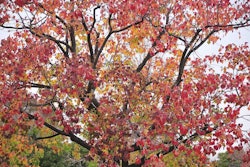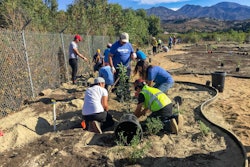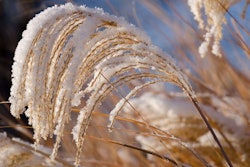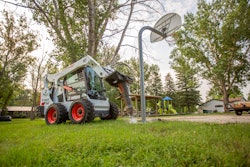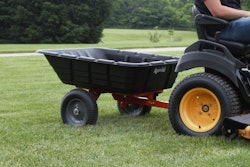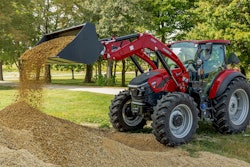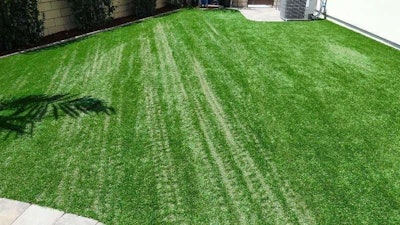 Typical result of reflective burn on artificial grass.
Typical result of reflective burn on artificial grass.Photo: Go Green Synthetic Lawn Solution
As artificial turf continues to rise in popularity in certain regions, reports of synthetic turf melting are increasing due to the advent of energy-efficient Low-E glass.
Low-E glass uses a microscopic coating of metallic oxide that allows light to enter, but radiant heat and solar heat are bounced off the glass surface on to other substances. While these window reflections can cause natural turfgrass to die or catch on fire, the heat will cause artificial turf to melt.
Most synthetic turfs have a melting point of around 175-200 degrees Fahrenheit and the reflected heat from Low-E glass windows can easily reach these temperatures.
Some of the precautions you can take if you are installing artificial turf for one of your clients is to view the area where it will be installed when it is hottest during the day. Take note of the window locations and if sunlight is being reflected on the intended space.
If there is secondary glare occurring in the planned area, use a thermometer to check the temperature. If it is over 150 degrees F, then take precautionary measures to have a window film installed that reduces exterior reflection or redesign the landscape to have hardscaping in the areas of concern.
“If you are a contractor and ignore the possibility of you or your client’s installation being a victim of window glare, then you will succumb to not only losing money, but your reputation as well,” said Joe Wadkins, global synthetic turf consultant. “I recommend doing your due diligence and learning how window glare and heat reflection can damage your workmanship and keep the synthetic turf industry proud.”
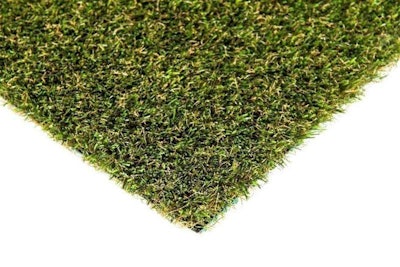 Go Green Platinum HeatMaxx 65
Go Green Platinum HeatMaxx 65Photo: Go Green Synthetic Lawn Solution
If your client already has synthetic turf installed and is concerned about their lawn melting, use a test strip of artificial turf in the area of concern and observe the damage after a week.
Then you can decide with your customer what options suit them best. Awning windows and window films are straightforward options that mitigate window reflections.
Installing tall trees can protect turf from sun reflection damage, but this is the most time-consuming option, as your clients will still have to wait for them to grow to a significant size.
Go Green Synthetic Lawn Solutions has also introduced a product that answers this industry-wide issue of lawns being melted by Low-E windows. According to the company, they are the first and only manufacturer to offer a 15-year warranty against reflective burns.
“We have been working for years to perfect our propriety blend of nylon yarns to combat the heat issues our industry has been challenged with,” said David Davis, president of Go Green.
Most artificial turf is made of polypropylene and polyethylene and have melt temperatures around 320 degrees F, according to Go Green. The Platinum HeatMaxx series is made with nylon, which has a melting point of 460 degrees F.
“This has been quite a frustrating problem for our entire industry,” said Michelle Balicki, vice president of sales and marketing. “The finger has been pointed at the artificial turf manufacturer to mitigate an issue that has affected homeowners, architects and commercial properties of all kind. But the truth is, this is clearly a much more wide-spread problem that expands much farther than our industry. We are just very excited to be able to provide a solution.
To learn more about the Platinum HeatMaxx, Platinum HeatMaxx 65 or Platinum HeatMaxx 90, click here.


